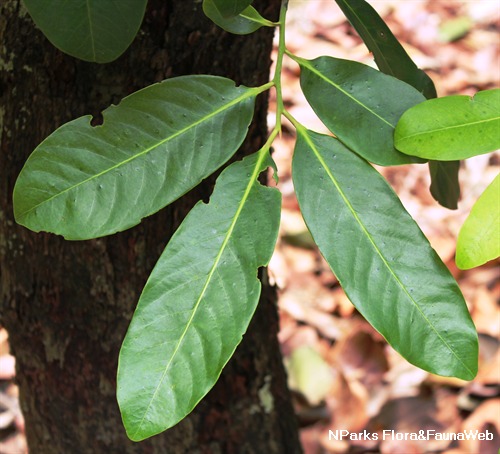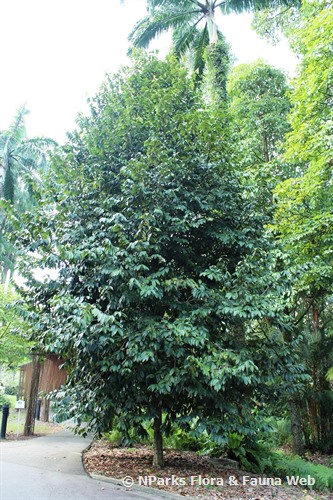
Back
Diospyros pyrrhocarpa Miq.
| Family Name: | Ebenaceae |
| Synonyms: | Diospyros ahernii Merr., Diospyros asterocalyx Hiern, Diospyros reflexa King & Gamble |
Name
Classifications and Characteristics
| Plant Division | Angiosperms (Flowering Seed Plants) (Dicotyledon) |
|---|---|
| Plant Growth Form | Tree (Medium (16m-30m)) |
| Lifespan (in Singapore) | Perennial |
| Mode of Nutrition | Autotrophic |
Biogeography
| Native Distribution | India, Malaysia, Thailand, the Philippines |
|---|---|
| Native Habitat | Terrestrial |
| Preferred Climate Zone | Tropical, Sub-Tropical / Monsoonal |
Description and Ethnobotany
| Growth Form | A medium sized tree up to 23 m tall. |
|---|---|
| Foliage | Its alternate, stalked leaves are oblong-elliptic to oblong-obovate, up to 30 cm long and 9 cm wide. The midrib is prominent below, covered with rusty hairs in young leaves. Secondary veins are also sunken below, arching towards the leaf margin. |
| Stems | The newly grown stems are covered with short rusty hair, turning to glabrous when getting older. Fruits: Fruits are ovoid-ellipsoid to globose, measuring up to 5 cm in diameter. |
| Habitat | Found in lowland mixed dipterocarp forest. |
| Etymology | Diospyros is derived from two Greek words, dios (divine) and pyros (wheat), meaning divine wheat (fruit). |
Landscaping Features
| Desirable Plant Features | Ornamental Form |
|---|---|
| Landscape Uses | Parks & Gardens |
Plant Care and Propagation
| Light Preference | Full Sun |
|---|---|
| Water Preference | Moderate Water |
| Plant Growth Rate | Moderate |
| Rootzone Tolerance | Moist Soils, Well-Drained Soils, Fertile Loamy Soils |
| Propagation Method | Seed |
Foliar
| Foliage Retention | Evergreen |
|---|---|
| Mature Foliage Colour(s) | Green |
| Foliar Type | Simple / Unifoliate |
| Foliar Arrangement Along Stem | Alternate |
Image Repository
Others
| Master ID | 32878 |
|---|---|
| Species ID | 7292 |
| Flora Disclaimer | The information in this website has been compiled from reliable sources, such as reference works on medicinal plants. It is not a substitute for medical advice or treatment and NParks does not purport to provide any medical advice. Readers should always consult his/her physician before using or consuming a plant for medicinal purposes. |

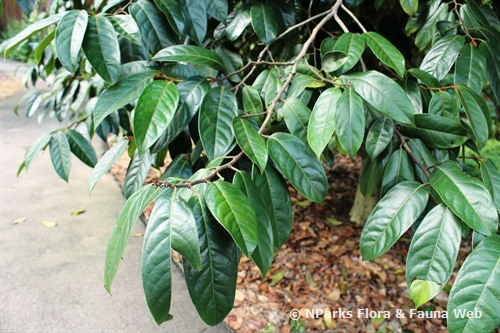
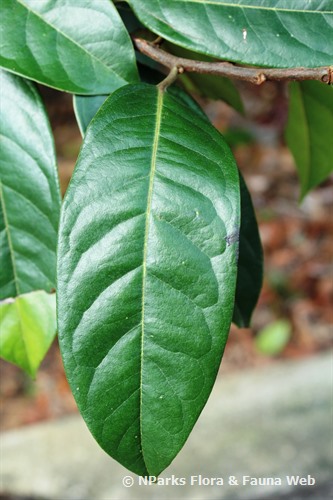
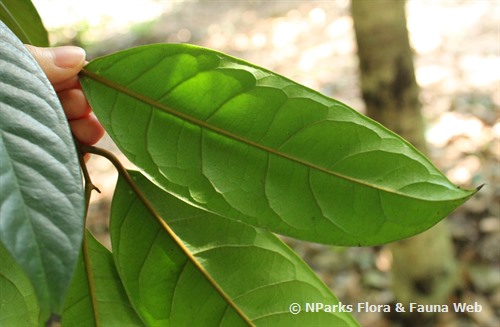
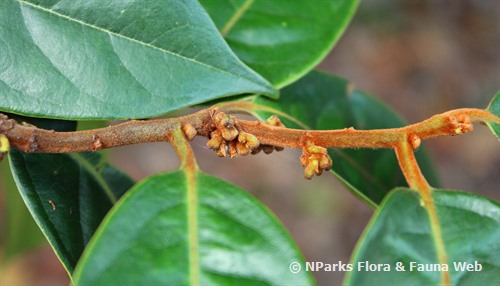
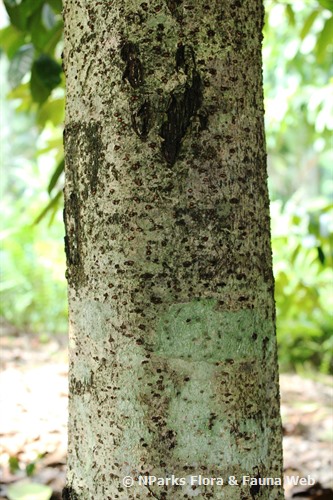
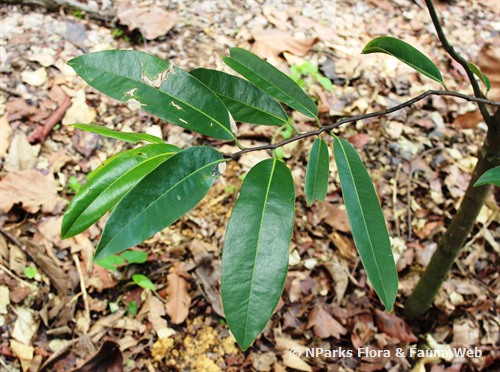
_lowres.jpg)
